Analysis

December 4, 2019
Construction Put in Place Data for October
Written by Peter Wright
State and locally funded construction is relatively healthy, but privately funded work is in decline, according to Steel Market Update’s latest analysis of Commerce Department data.
Construction Put in Place (CPIP) expenditures data for October was released on Dec. 2. Through October, total construction had negative momentum every month since October last year. In the period July through October, total construction declined each month on a year-over-year basis for the first time since November 2011.
![]()
Dodge Data & Analytics released its 2020 Dodge Construction Outlook on Oct. 31. The report predicts that total U.S. construction starts will slip 4 percent from the 2019 estimated level of activity. “The recovery in construction starts that began during 2010 in the aftermath of the Great Recession is coming to an end,’ stated Chief Economist Richard Branch. “Easing economic growth driven by mounting trade tensions and lack of skilled labor will lead to a broad-based but orderly pullback in construction starts in 2020. After increasing 3 percent in 2018, construction starts dipped an estimated 1 percent in 2019 and will fall 4 percent in 2020…. By major construction sector, the dollar value of starts for residential buildings will be down 6 percent, while starts for both nonresidential buildings and nonbuilding construction will drop 3 percent.”
Steel Market Update analyzes the CPIP data to provide a clear description of activity that accounts for about 45 percent of total U.S. steel consumption. See the end of this report for more detail on how we perform this analysis and structure the data. The growth or contraction that we report in this analysis has had seasonality removed by providing only year-over-year comparisons.
Total Construction
Total construction contracted by 0.5 percent in three months through October and declined by 0.1 percent in 12 months through October, both year over year. Since the three-month growth rate is lower than the 12-month rate, we conclude that momentum is negative. October construction expenditures totaled $101.0 billion, which breaks down to $69.8 billion of private work, $29.3 billion of state and locally funded (S&L) work, and $2.0 billion of federally funded work (Table 1). Growth trend columns in all four tables in this report show momentum.

Figure 1 shows total construction expenditures on a rolling 12-month basis as the blue line and the rolling three-month year-over-year growth rate as the brown bars. Total construction on a rolling 12-months basis through April was at an all-time high, but declined each month through October. The brown bars show growth on a 3MMA basis year over year and became negative in June through October for the first time since November 2011.
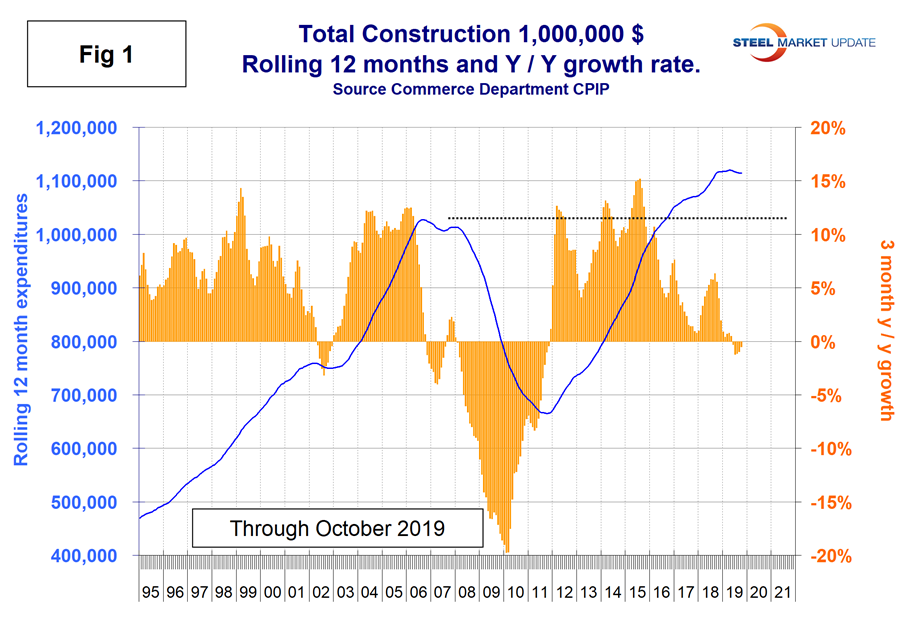
Figures 1, 2, 6, 7 and 9 in this analysis have the same format, the result of which is to smooth out variation and eliminate seasonality. We consider four sectors within total construction: nonresidential, residential, infrastructure and other. The latter is a catchall and includes industrial, utilities and power. Of these four sectors, residential buildings and infrastructure had positive momentum in October.
In 12 months through October 2019, construction expenditures totaled $1.115 trillion. (This number excludes residential improvements; see explanation below.) To put that number in context, the pre-recession peak of total construction on a rolling 12-month basis was $1.028 trillion through November 2006. The low point was $665.1 billion in the 12 months through March 2011.
Private Construction
Table 2 shows the breakdown of private expenditures into residential and nonresidential and subsectors of both. The growth rate of private construction in three months through October was negative 3.8 percent, down from positive 5.8 percent in three months through August last year. Growth has declined continuously every month since August last year and became negative in February this year as shown by the brown bars in Figure 2. February through October were the first months for private construction to experience negative growth since August 2011.

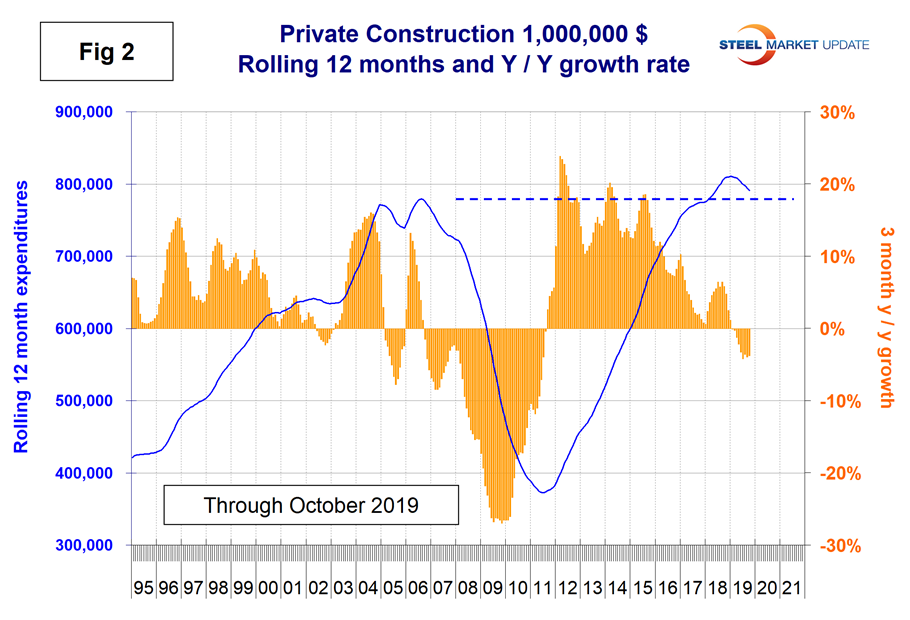
Within the nine sectors of private nonresidential buildings, none had positive momentum in three months through October as healthcare and religious buildings broke even.
Excluding property improvements, single-family residential contracted by 4.9 percent in three months through October with positive momentum, while multifamily residential grew by 0.3 percent with negative momentum. Total housing starts as reported by Census Bureau expanded by 6.1 percent in three months through October. In the starts data, the whole project is entered into the database when ground is broken. Construction Put in Place is based on spending work as it proceeds; the value of a project is spread out from the project’s start to its completion. Single-family starts expanded by 4.9 percent in the three months through October year over year. August through October were the first months with positive growth since September last year. Multifamily starts expanded by 9.2 percent. Both the single-family and multifamily starts data were better in October than the CPIP result. Figure 3 shows the growth of both housing sectors since January 2005 and Figure 4 shows the ratio of single-family to multifamily starts. The proportion of single-family gradually increased from January 2015 when the ratio was 1.66 in favor of single units to 2.40 in October 2019. Figure 5 shows total housing starts in four regions with the South being the strongest and the Northeast the weakest. On a 3MMA basis, the National Association of Home Builders optimism index improved every month from January through October this year.
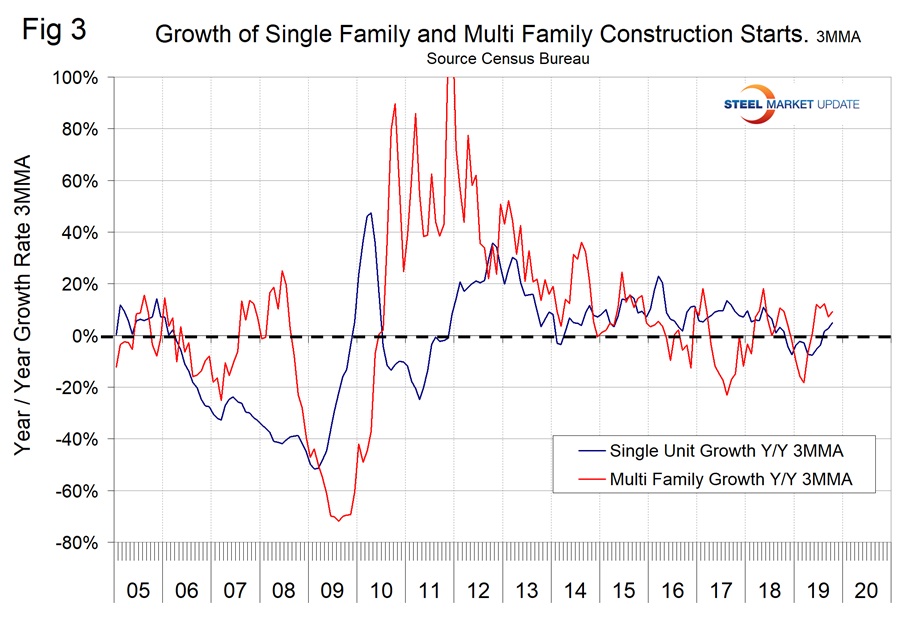
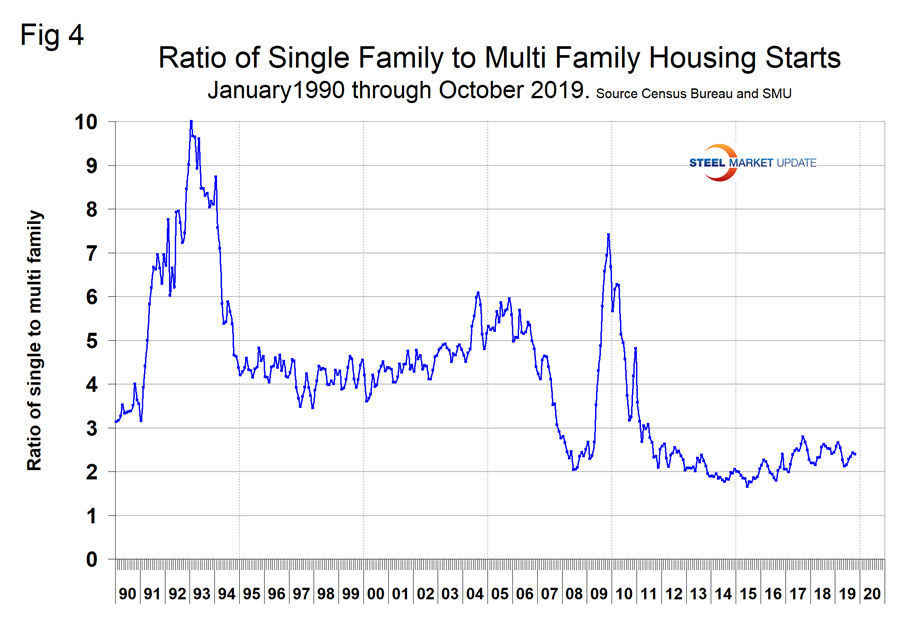
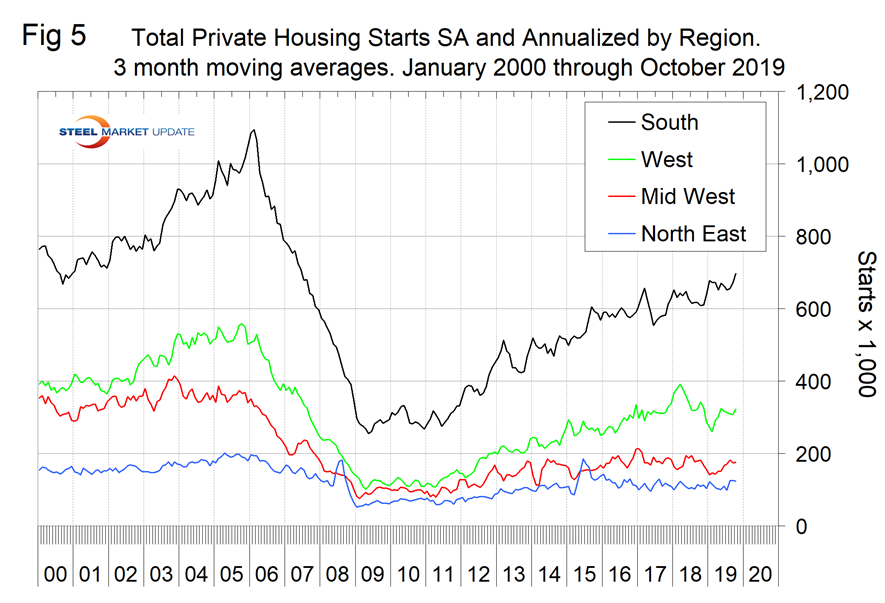
State and Local Construction
The growth rate of S&L work was in the range of 4.0 to 6.9 percent for the six months through September, but broke out to the upside in October at 7.1 percent (Table 3). This includes both infrastructure and nonresidential buildings. S&L nonresidential buildings had negative momentum each month from November 2018 through July 2019 and became positive in August through October with a 7.4 percent growth rate in October. Educational is by far the largest subsector of S&L nonresidential buildings at $6.9 billion in October and expanded at a 5.0 percent rate in three months through October with positive momentum. Figure 6 shows the history of total S&L expenditures.
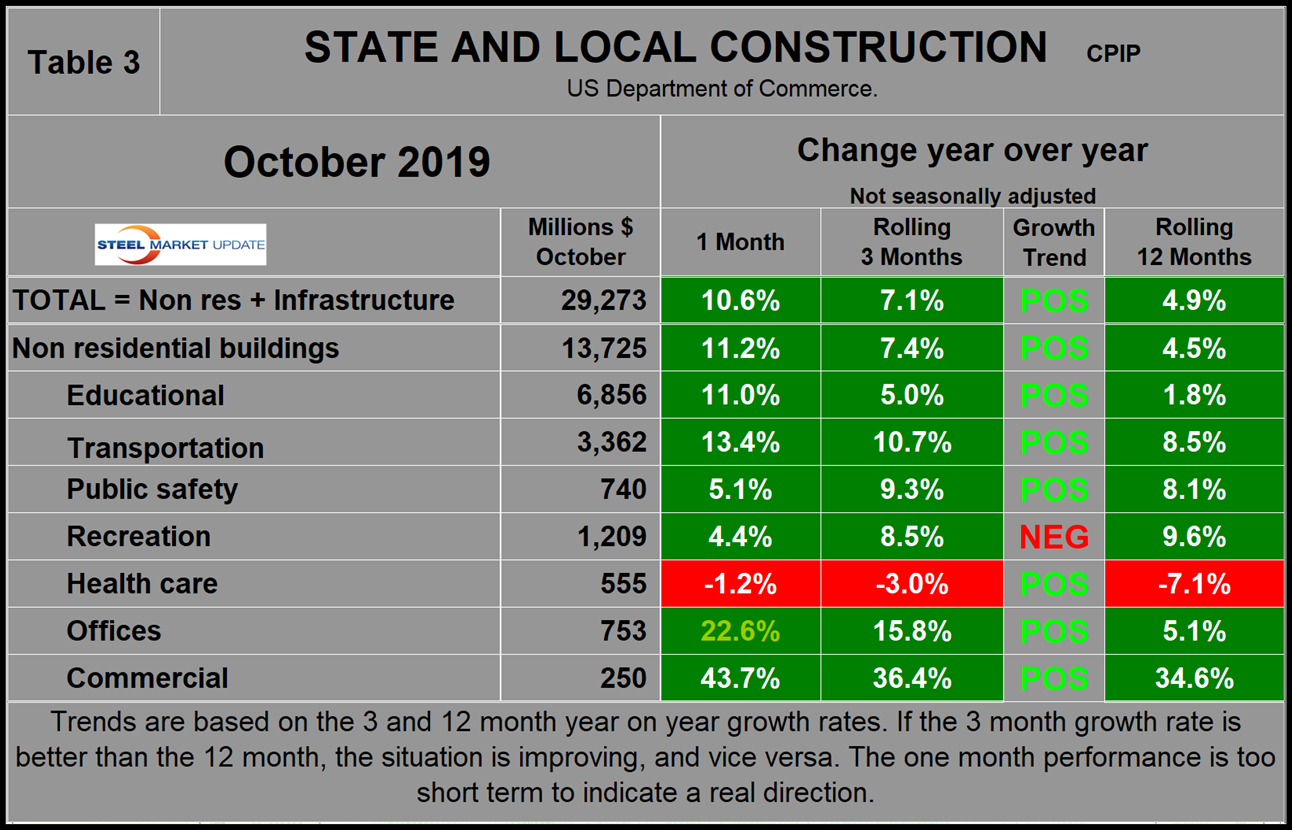
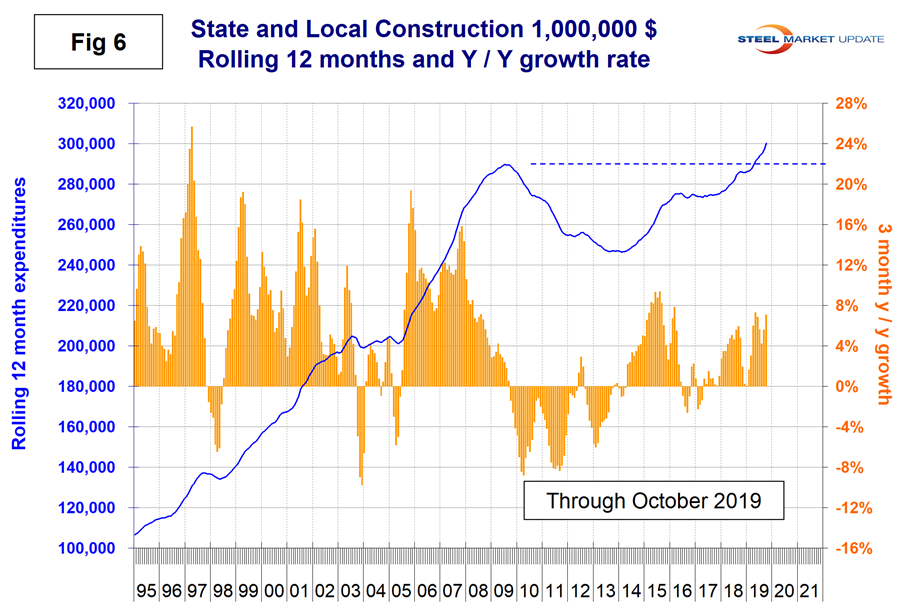
Drilling down into the private and S&L sectors as presented in Tables 2 and 3 shows which project types should be targeted for steel sales and which should be avoided. There are also regional differences to be considered, data for which is not available from the Commerce Department.
Infrastructure
Infrastructure expenditures have had robust growth in 2019. Year over year, the growth of infrastructure expenditures in three months through October was 6.3 percent with double-digit expansion in April through June. On a rolling 12-months basis, infrastructure expenditures in October were at an all-time high. (Note: This is not seasonal as we are considering year-over-year data.) Highways and streets including pavement and bridges account for almost three quarters of total infrastructure expenditures. Highway pavement is the main subcomponent of highways and streets and had an 8.8 percent growth in three months through October. Bridge expenditures had negative growth in every month of 2018 before improving to positive 8.9 percent in April 2019 and declining again in each of the following five months to negative 7.8 percent in October (Table 4).
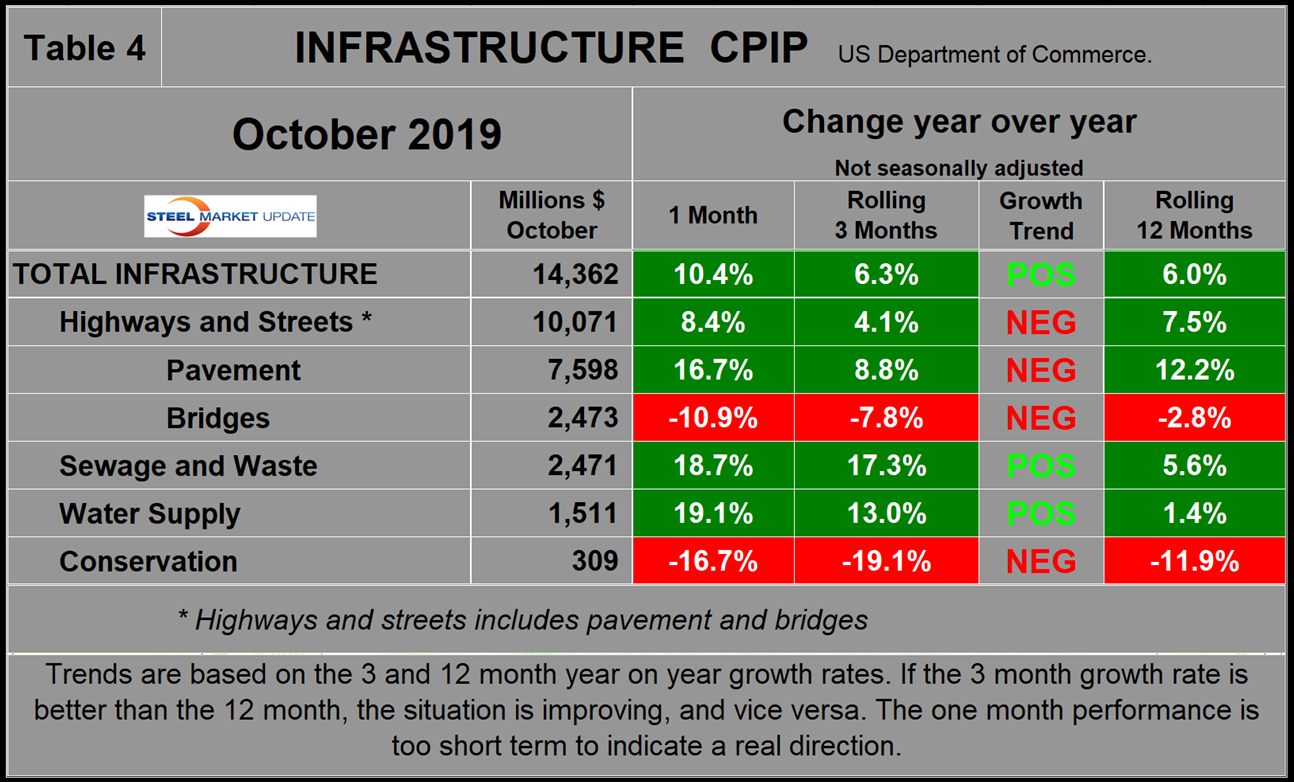
Figure 7 shows the rolling 12-month history of infrastructure expenditures and the year-over-year growth rate.
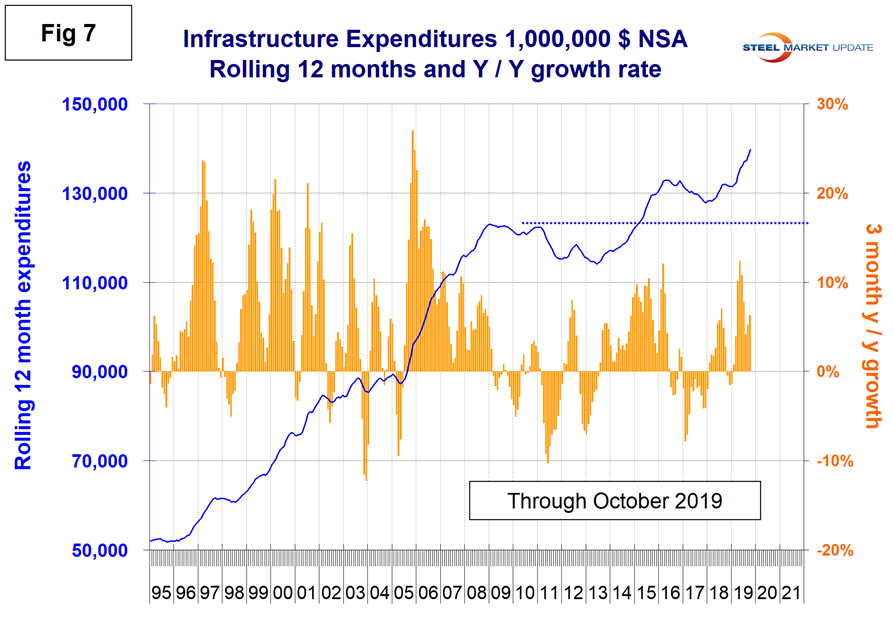
Total Building Construction Including Residential
Figure 8 compares year-to-date expenditures for the construction of the various building sectors for 2018 and 2019. Single-family residential is dominant and in the 12 months of 2018 totaled $281.8 billion. In the first 10 months of 2019, the annual rate of single-family housing expenditures was $271.6 billion.
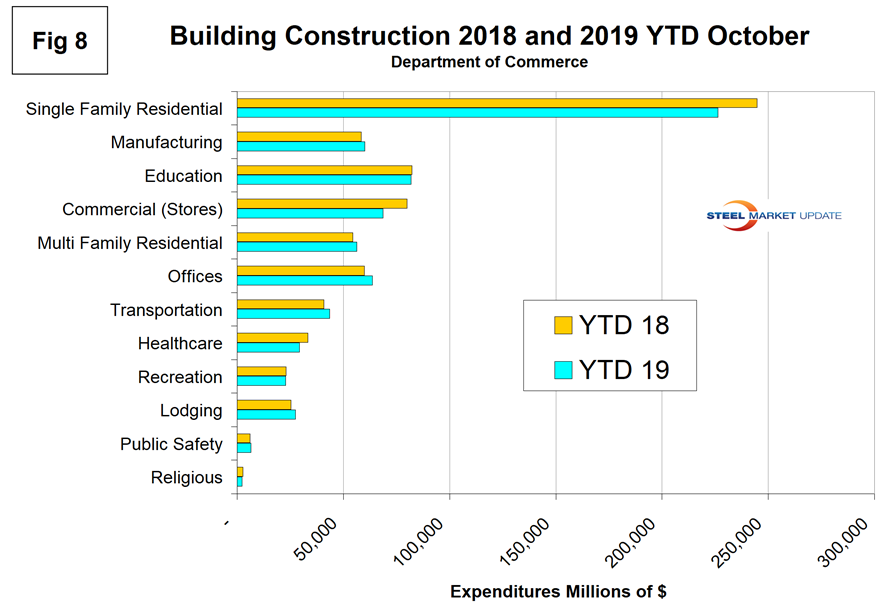
Figure 9 shows total expenditures and growth of nonresidential building construction. On a rolling 12-months basis, expenditures on nonresidential buildings were at an all-time high in April this year. The growth rate has declined in each of the last six months reaching negative 1.4 percent in October. July through October were the first months for nonresidential building construction to contract since September 2011.
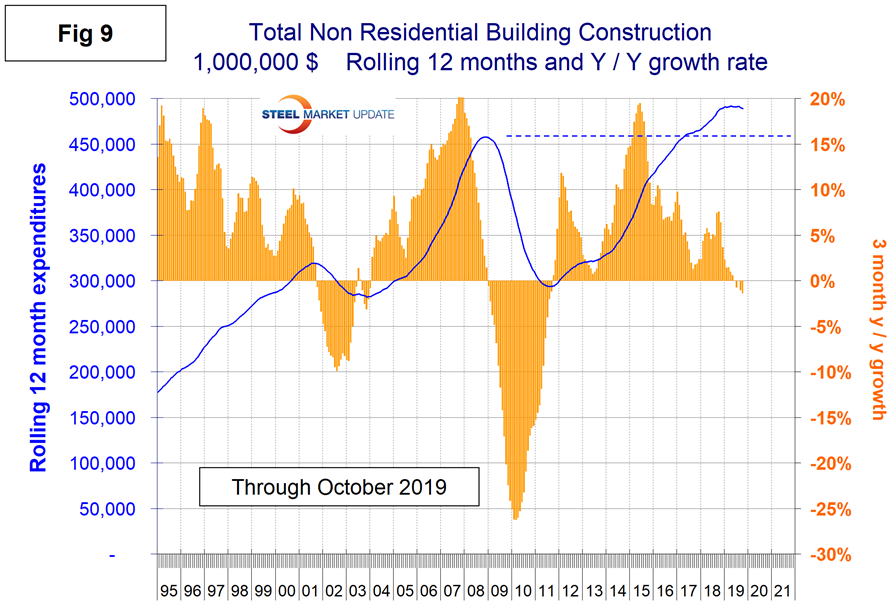
SMU Comment: Construction continued to decline in three months through October driven by the weakness of privately funded work. State and locally funded work including infrastructure is doing well.
Explanation: Each month, the Commerce Department issues its Construction Put In Place (CPIP) data, usually on the first working day covering activity one month and one day earlier. There are three major categories based on funding source: private, state and local, and federal. Within these three groups are about 120 subcategories of construction projects. At SMU, we slice and dice the expenditures from the three funding categories to provide as concise a summary as possible of steel consuming sectors. For example, we combine all three to reach a total of nonresidential building expenditures. CPIP is based on spending work as it occurs and is estimated each month from a sample of projects. In effect, the value of a project is spread out from the project’s start to its completion. This is different from the starts data published by the Census Bureau for residential construction, by Dodge Data & Analytics and by Reed Construction for nonresidential, and by Industrial Information Resources for industrial construction. In the case of starts data, the whole project is entered into the database when ground is broken. The result is that the starts data can be very spiky, which is not the case with CPIP.
The official CPIP press release gives no appreciation of trends on a historical basis and merely compares the current month with the previous one on a seasonally adjusted basis. The background data is provided as both seasonally adjusted and non-adjusted. The detail is hidden in the published tables, which SMU tracks and dissects to provide a long-term perspective. Our intent is to provide a route map for those subscribers who are dependent on this industry to “follow the money.” This is a very broad and complex subject, therefore, to make this monthly write-up more comprehensible, we are keeping the information format as consistent as possible. In our opinion, the absolute value of the dollar expenditures presented is of little interest. What we are after is the magnitude of growth or contraction of the various sectors. In the SMU analysis, we consider only the non-seasonally adjusted data. We eliminate seasonal effects by comparing rolling three-month expenditures year over year. CPIP data also includes the category of residential improvements, which we have removed from our analysis because such expenditures are minor consumers of steel.
In the four tables included in this analysis, we present the non-seasonally adjusted expenditures for the most recent data release. Growth rates presented are all year over year and are the rate for the single month’s result, the rolling three months and the rolling 12 months. We ignore the single month year-over-year result in our write-ups because these numbers are preliminary and can contain too much noise. The growth trend columns indicate momentum. If the rolling three-month growth rate is stronger than the rolling 12 months, we define that as positive momentum, and vice versa. In the text, when we refer to growth rate, we are describing the rolling three-month year-over-year rate. In Figures 1, 2, 6, 7 and 9 the blue lines represent the rolling 12-month expenditures and the brown bars represent the rolling three-month year-over-year growth rates.







